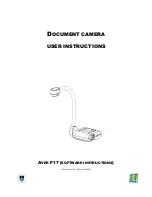
10
Basic techniques for better images
A digital image is made up of a collection of small dots called pixels.
If it contains a large number of pixels, the picture becomes large, it takes up more memory,
and the image is displayed in fine detail. “Image size” is shown by the number of pixels.
Although you cannot see the differences on the screen of the camera, the fine detail and data
processing time differ when the image is printed or displayed on a computer screen.
Description of the pixels and the image size
Selecting the image size for use
The default settings are marked with
.
1) Images are recorded in 3:2 aspect ratio, same as photograph printing paper or postcards, etc.
2) Both edges of the image may be cut off when printing (page 104).
Quality
On “image quality” and “image size”
1
Image size: 8M
3264 pixels × 2448 pixels = 7,990,272 pixels
2
Image size: VGA
640 pixels × 480 pixels = 307,200 pixels
Pixel
Many pixels
(Fine
image quality and
large file size)
Example: Printing in
up to A3 size
Few pixels
(Rough
image quality but
small file size)
Example: An attached
image to be sent by e-
mail
Image size
Guidelines
No. of images
Printing
8M (3264×2448)
For prints up to A3(11×17")
Less
More
Fine
Rough
3:2
1)
(3264×2176)
Shoot in 3:2 aspect ratio
5M (2592×1944)
For prints up to A4(8.5×11")
3M (2048×1536)
For prints up to 10×15 cm (4×6") or
13×18 cm(5×7")
VGA (640×480)
Shoot at a small image size for e-mail
attachment
16:9
2)
(1920×1080)
Shoot in HDTV aspect ratio
Pixels











































